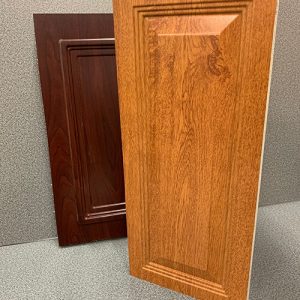One of the most common uses for laminating services is creating alternatives to solid wood. These materials are a cheaper substrate, generally chipboard or MDF, but have a laminate coating. The lamination gives the impression of a timber, whether it is oak, pine, or any other option.
These materials are great for a number of reasons. Firstly, they tend to be much cheaper than solid woods. Secondly, the laminate can improve wear and water resistance. Thirdly, they can be more sustainable and better for the environment.
Hot pressing
 There are a number of different ways to apply the laminate to the wooden substrate. Hot pressing is one of the most popular. It utilises heat to activate an adhesive and then applies pressure to create a bond between the materials.
There are a number of different ways to apply the laminate to the wooden substrate. Hot pressing is one of the most popular. It utilises heat to activate an adhesive and then applies pressure to create a bond between the materials.
While this is a good method and can offer great results, there can be some issues. What we want to do is look at the most common ones, why they happen, and how to avoid them to get quality laminating services.
Spots in bonds
Sometimes there can be spots where the laminate does not bond fully to the substrate. It can happen for a number of reasons, including improper spread of adhesive or pressure, cold spots on the plate, or unevenness in the substrate.
There are a number of potential solutions here. Firstly, you can ensure the adhesive is spread evenly and covers the whole laminate. Secondly, you can check to make sure the substrate has uniform thickness. Plus, you can check the pressure and temperature. You may need to increase the former.
Adhesive bleeding through
One of the messiest issues with laminating services is pressing only to find that the glue has come through the laminate, making the surface sticky. It happens for a number of reasons. Primarily it is because the pressure is too excessive. If there is too much adhesive it can force it through. In some cases the moisture content of the laminate itself is to blame.
Solutions here are relatively simple. You can reduce the pressure and glue spread. In some cases it is a good idea to use a more viscous adhesive. You may even need to dehumidify.
Steam blisters
In some cases small bubbles or blisters can form under the laminate. Generally it happens because of excess moisture, resulting in steam when the heat is applied. Excessive press temperatures cause it too. Others can include too much adhesive, wet spots, and issues with the press set up.
Again some of the solutions are easy. You can reduce the temperature and adhesive spread. It can also be a good idea to ensure the moisture content of substrates is low. Plus, you should avoid materials that have wormholes, dents, and knots because they can cause issues.
Panel warping
The issues above are relatively minor, but in some cases you can have problems with warpage when you get laminating services. It is always a potential issue when you use heat and pressure. Not surprisingly, excessive temperatures are a leading cause. Others include excess or uneven adhesive, high moisture content, and unevenness in the construction.
You need to think carefully about solutions here to avoid warping. Start by making sure the adhesive spread is even and you use an appropriate amount. Then, check the plate temperature and pressure. It can also help to look at the grain orientation to maximise the strength.
Do you want the best laminating services?
As you can see, there are a number of potential issues with lamination, especially when you choose hot pressing. However, we understand how they happen and what to do to reduce the risk. It means we can deliver consistent, high quality results for our clients. This is the case for any products, including those with wood veneers.
So, if you want the best services, speak to us.
